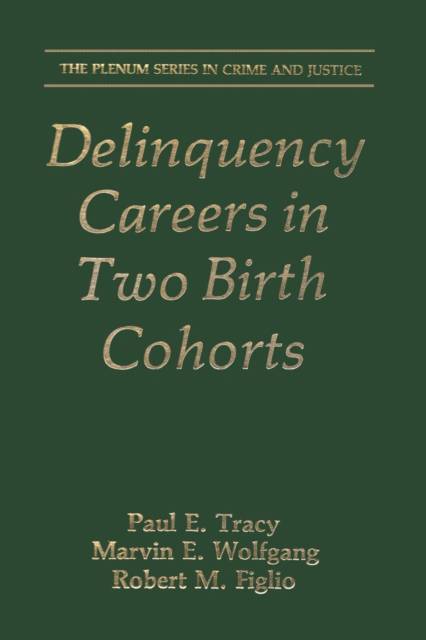
- Afhalen na 1 uur in een winkel met voorraad
- Gratis thuislevering in België vanaf € 30
- Ruim aanbod met 7 miljoen producten
- Afhalen na 1 uur in een winkel met voorraad
- Gratis thuislevering in België vanaf € 30
- Ruim aanbod met 7 miljoen producten
Zoeken
€ 83,95
+ 167 punten
Omschrijving
Delinquency in a Birth Cohort, published in 1972, was the first criminologi- cal birth cohort study in the United States. Nils Christie, in Unge norske lovorertredere, had done the first such study as his dissertation at the University of Oslo in 1960. Professor Thorsten Sellin was the inspiration for the U.S. study. He could read Norwegian, and I could a little because I studied at the University of Oslo in my graduate years. Our interest in pursuing a birth cohort study in the United States was fostered by the encouragement of Saleem Shah who awarded us a grant from the National Institute of Mental Health to begin our birth cohort studies at the University of Pennsylvania by investigating the delinquency of the 1945 cohort. We studied this group of 9,945 boys extensively through official criminal history and school records of their juvenile years. Subsequently, we followed up the cohort as adults using both adult arrest histories and an interview of a sample of the cohort. Our follow-up study was published as From Boy to Man, From Delinquen- cy to Crime in 1987.
Specificaties
Betrokkenen
- Auteur(s):
- Uitgeverij:
Inhoud
- Aantal bladzijden:
- 320
- Taal:
- Engels
- Reeks:
Eigenschappen
- Productcode (EAN):
- 9781468470529
- Verschijningsdatum:
- 25/11/2012
- Uitvoering:
- Paperback
- Formaat:
- Trade paperback (VS)
- Afmetingen:
- 152 mm x 229 mm
- Gewicht:
- 435 g

Alleen bij Standaard Boekhandel
+ 167 punten op je klantenkaart van Standaard Boekhandel
Beoordelingen
We publiceren alleen reviews die voldoen aan de voorwaarden voor reviews. Bekijk onze voorwaarden voor reviews.











